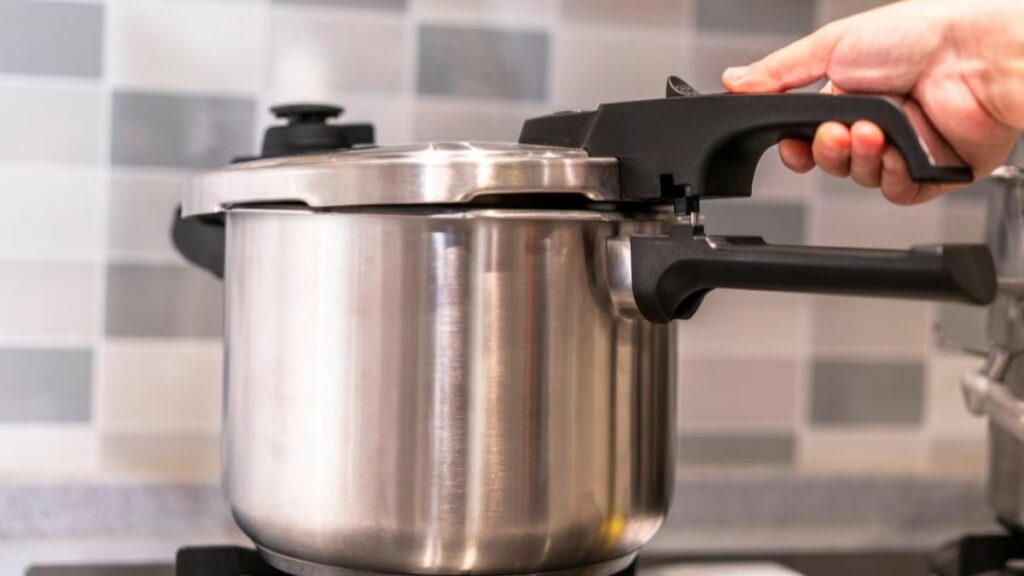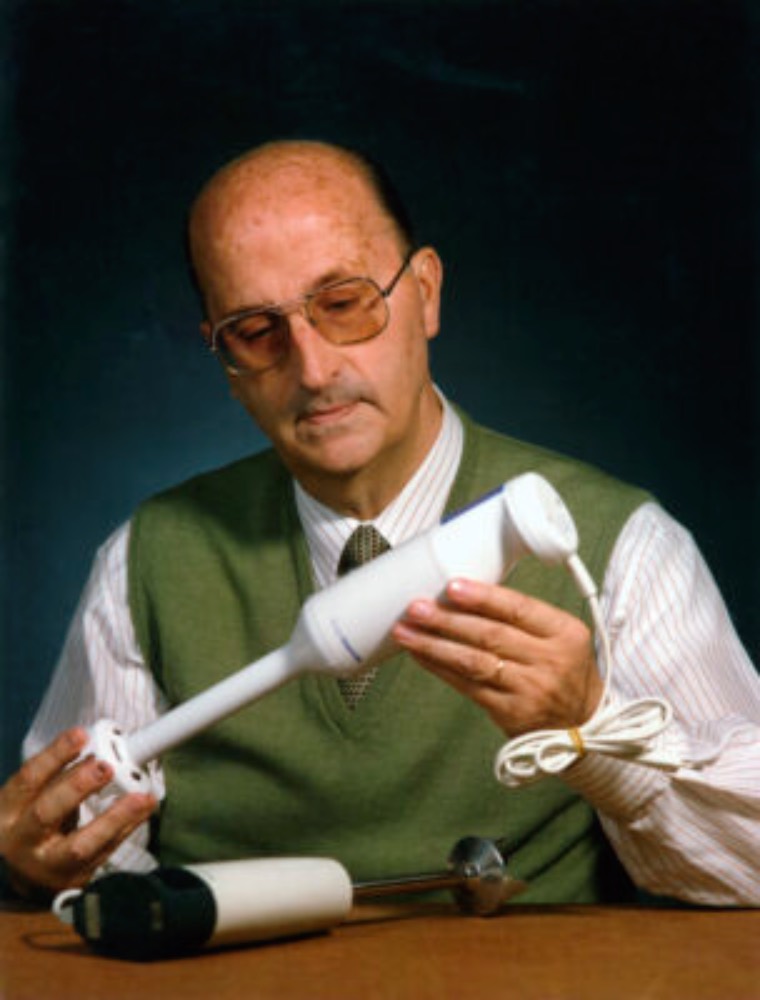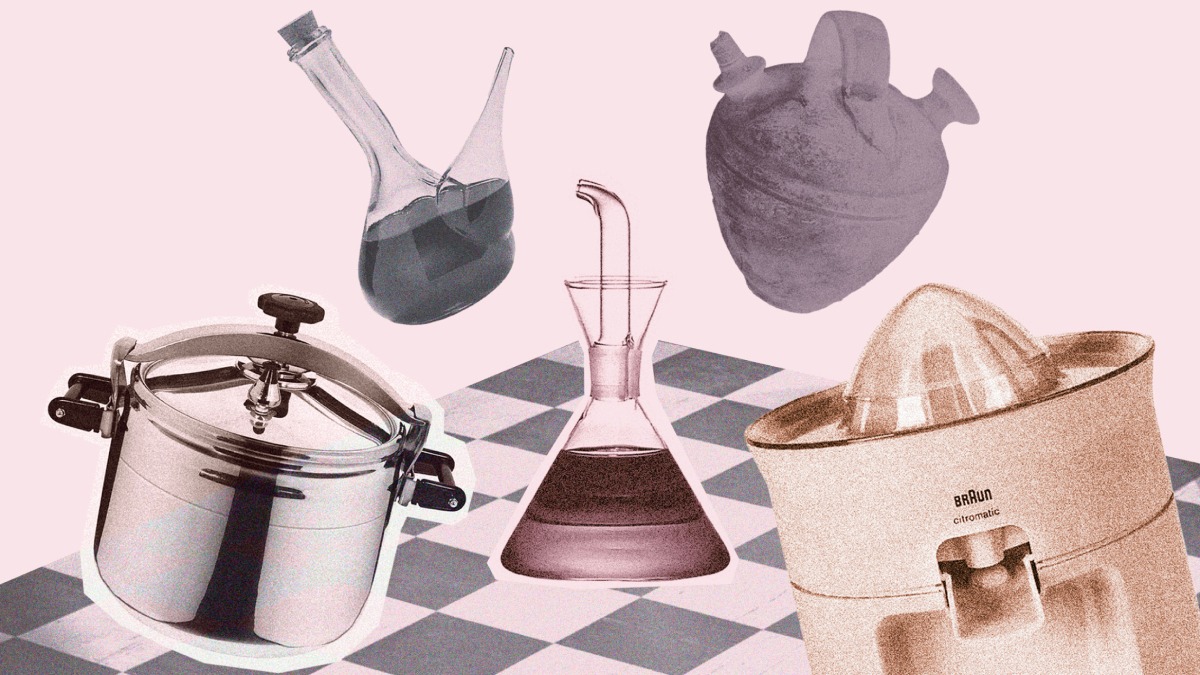Click here to read the Spanish version.
Go into your kitchen, open cabinets, take out the dishes, look at the appliances…. We assure you that much of what you see is Made in Spain. The contribution of Spanish designers to the kitchen is greater than you think. We are not only great in gastronomy but also in Spanish inventions, from what is probably the first: the botijo, whose first vestiges place it 3,500 years ago in the site of Puntarrón Chico, in Murcia. It may seem a simple gadget, but simple is sometimes the most evolved, and in design, less is always more (just look at the design of Chupa Chups if you don’t believe it).
The botijo has the honor of having appeared in the pages of the journal Chemical Engineering Education, in which two researchers from the Polytechnic University of Madrid published in 1995 the scientific explanation of why it keeps water cool at a temperature up to ten degrees lower than outside.
Another staple for our parents and grandparents was the porrón, whose origins were in the Roman ritón, a horn-shaped container that often represented an animal. The oldest example is preserved in the monastery of Poblet in Tarragona. And a curiosity: it seems that the writer George Orwell did not like it, because it reminded him of a hospital bedpan. We cannot forget the wineskin, which allowed the wine to be transported from one place to another, being also a hygienic container because, like the other two, botijo and porrón, it did not touch the drinker’s mouth.

Are you familiar with the saying that there were only two great dangers: the ETA and the pressure cooker? The latter is a casserole that looked like a time bomb and that should never be opened while steam is still coming out of the spout, as our grandmothers and mothers used to advise. If you are of a certain age, you will be familiar with the Magefesa brand, whose pots and pans were very famous in our country. The first patent was granted in 1919 to José Alix Martínez, with the following title “pot for all kinds of stews to be called express pot”. Although today it is criticized for cooking in a short time what takes hours, the truth is that it saved cooks a lot of work, achieving delicious stews.

Let’s go with the mini blender, an invention in 1957 by Gabriel Lluelles, who worked for Pequeñas Industrias Mecánico Eléctricas Reunidas (PIMER), which manufactured small household appliances. American blenders already existed, but they were very large (some weighed up to three kilos), and he had the idea of making the motorized blades independent of the beaker. This made them more manageable and easier to clean. You may have always thought that it was a foreign invention, because a few years after its commercialization Pimer was taken over by the German company Braun. Lluelles was also behind, together with Dieter Rams, another useful invention for the kitchen: the Citromatic juicer. They turned to the Spanish inventor because Spain is a country with a lot of oranges.
Rafael Marquina’s oil press is considered the best in the world. We are talking about a two-piece container that directs the oil with precision and whose dripping falls back into the interior through an orifice. That is to say: it never stains outside; its predecessors always dripped and, apparently, when the author was a child, he used to get slapped by his mother because of the oil stains on the tablecloth. Its design was similar to the flasks used in chemistry, which are used for the precise transfer of liquids. The oil can won the Delta Design Award the year it was launched, 1961.
Galician potes, paella and queimada (a traditional drink)
Paella is another patriotic design: the special pan for preparing Valencia’s signature dish. Or the container for the Galician queimada. This region is also the origin of another utensil that was widely used in rural homes: the pot, also known as marmita or caldero. Originally made of cast iron, it has also been made of other materials and is even used as a decorative element.
The Josper oven, which combines a grill and an oven, is also well known in haute cuisine. It was introduced in 1969 as the world’s first patented charcoal oven. It was developed by Josep Armangué, a blacksmith from Pineda del Mar (Barcelona), and Pere Juli, a restaurateur from the same town. The two of them teamed up and invented the oven whose name corresponds to the first syllables of their names: Josper.
There are many more national companies that are part of our kitchens. If you are of a certain age, you will be familiar with Forlady, created in 1967, which modernized the kitchens of the middle class with its wooden furniture. The Basque stove manufacturer Fagor or the Catalans Cata, with its griddles (but also its hoods and ovens made by the hand of El Celler de Can Roca). And who doesn’t know Silestone, the very hard material patented by Cosentino?
Let’s leave the kitchen and move on to the table itself, with its plates, cutlery and glasses. If we talk about tableware, from the eighteenth century onwards, royal factories were created in Spain, which used porcelain. The most important of these were the Royal Earthenware Factory of Alcora, the Buen Retiro factory, the Cartuja factory in Seville and Sargadelos in Lugo. As far as cutlery is concerned, we also have local exponents such as the company Platería Meneses, founded in 1840 and which survives today under the brand name Gernika Cubiertos y Menajes, whose products are used in Arzak, Mugaritz or the Basque Culinary Center, to name but a few.
With regard to glasses, Catalonia was, until the seventeenth century, the main producer of glass for domestic use. In 1727 the Royal Glass Factory of La Granja, in Segovia, was created under the mandate of Philip V, who considered the production of glass and mirrors strategic.
Much more recent in time and at other culinary levels, it is worth mentioning the spherification kit from the Bulli factory (which achieves ravioli and other spherical presentations with a fragile membrane), the Roner by Joan Roca, which allows creating a bain-marie with identical and constant temperature; Food Printing, by Paco Morales, Luis Fraguada and José Ramón Tramoyeres, which allows food to be printed, and Oxymoron, an iron for heating and sealing a brioche with ice cream inside, developed by Andreu Carulla for the Roca’s Rocambolesc.

